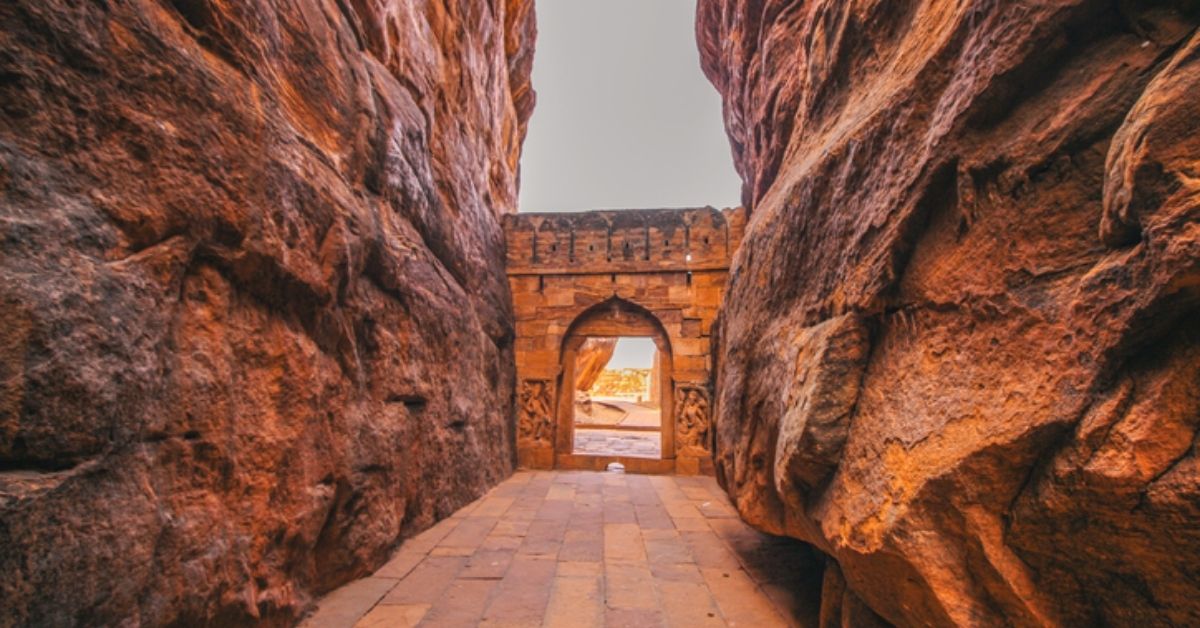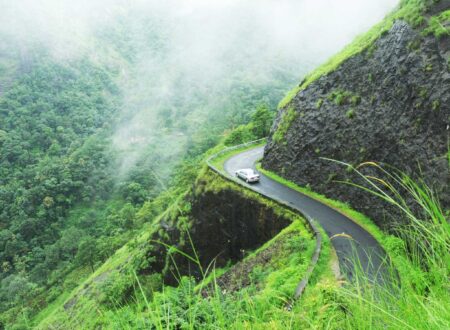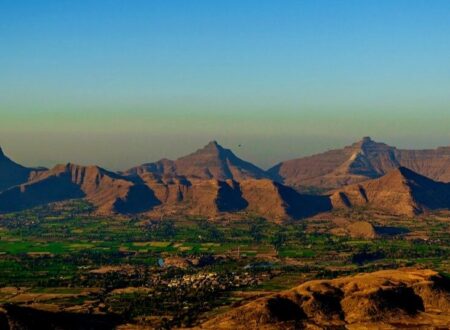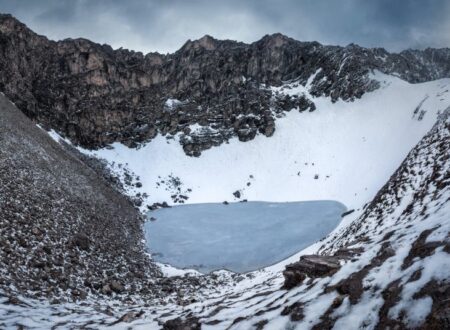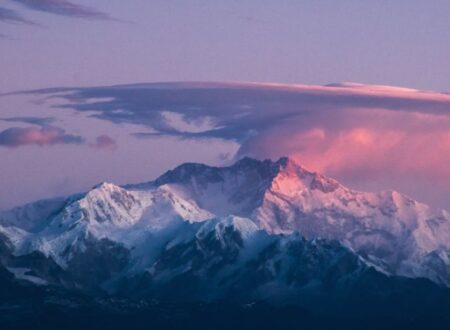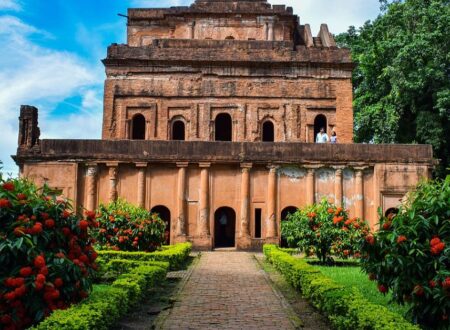India is popular for its culture, traditions and glorious history. The caves of India are a reflection of the stories tucked inside them that represent our Indian culture. Each state has a unique, outstanding cave that reflects its history, stories, architectural style, mystical carvings, sculpture, spirituality, etc. There are many legends and their stories attached to these caves of India. These reflect our glorious past, culture, and tradition.
Caves of India – Reflection of our glorious past
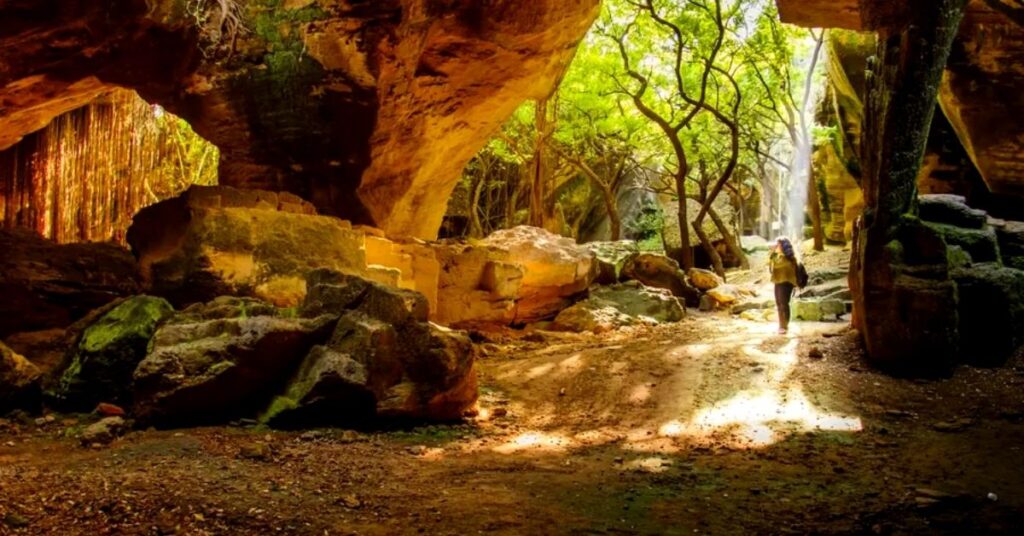
Must-visit Caves of India and their stories
1. Ajanta and Ellora Caves, Maharashtra
History – Recognised as a UNESCO World Heritage Site, both Ajanta and Ellora caves are amongst the largest rock-cut monastery-temple caves in the world. At Ajanta, there are 29 Buddhist cave temples from the 2nd century BC while in Ellora there are 34 Hindu, Buddhist and Jain temples from the 6th century AD.
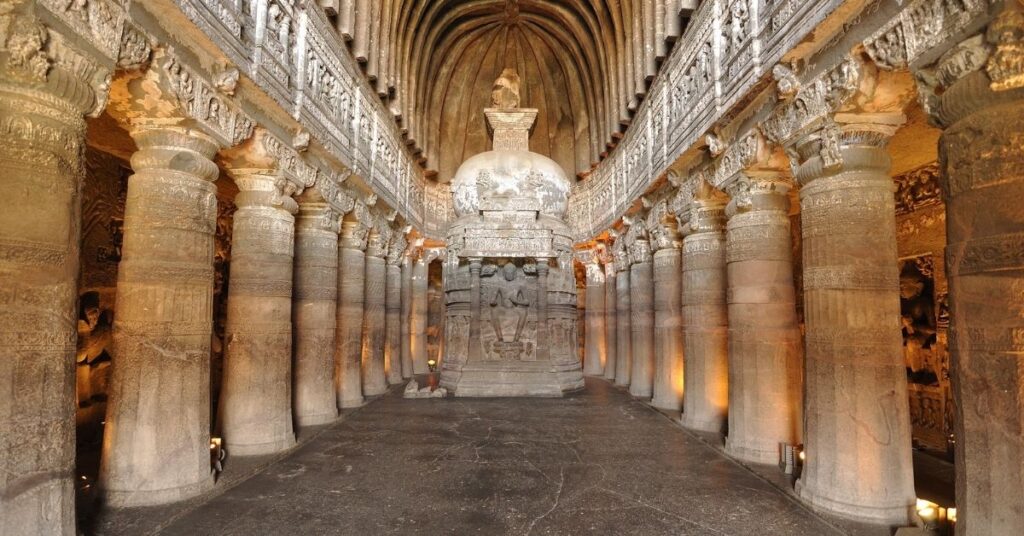
Story-The incredible temple of Kailash is a popular attraction in cave16 of Ellora. Dedicated to Lord Shiva, this temple is carved out of a single rock. However, who built this temple is a mystery. The entire cave is an incredible craft by hand and took around 18 years to complete. these caves in India are some of the most spectacular ones of all. The caves depict the story of conformity and religious faith. Excavated during the Rashtrakutas and Yadava dynasties these caves were devotional pilgrim sites and resting spots for many weary merchants.
Description- The heritage site depicts the ancient architecture that reveals how people of various religions and cultures came together. The paintings and sculptures describe the ancient culture of Buddhism. It is a declaration to the masterpiece of Dravidian architecture.
2. Elephanta Caves, Maharashtra.
History – Elephanta caves, about 7 to 10 km away from Mumbai and are of seven rock-cut caves. The name ‘Elephanta’ by the Portuguese invaders is a derivation during the 16th century due to the monolithic basalt sculpture of an elephant found near the entrance. Primarily, in ancient times the caves were infamous as Gharapuri caves.
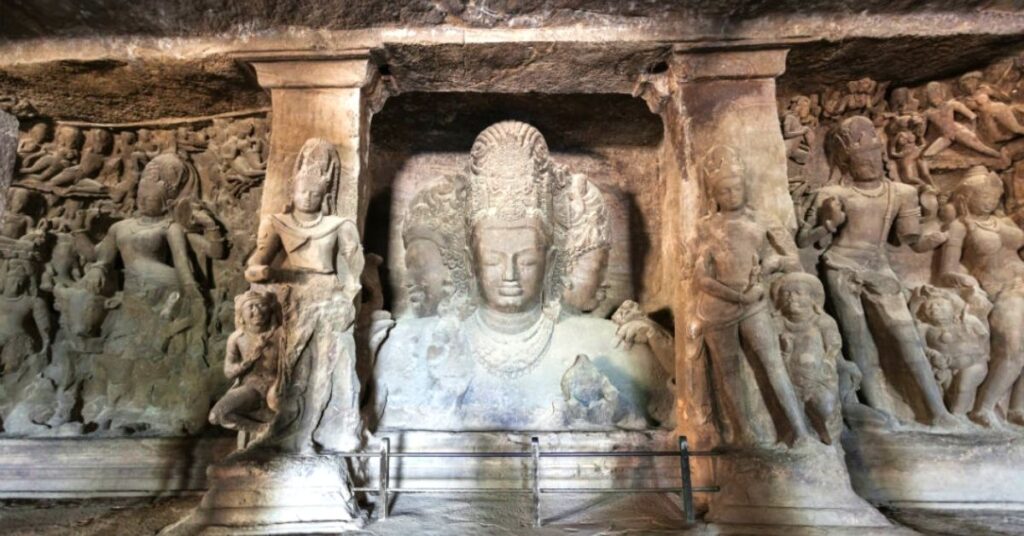
Story- Well-known for its primary attraction of Mahesh murti depicting Lord Shiva in three forms – Gangadhar, Ardhanarishvara, and Nataraja, thus celebrating the deity and his different forms.
Description– The caves have mystical carvings, beautiful sculptures and are finel design It showcases the craftsmanship and architectural prowess of several incredible sculptures.
3. Badami caves, Karnataka
History- Badami Caves are in the Bagalkot district of North Karnataka. The Chalukyas had this place as their capital during 540 AD. This place is popular due to its cave temples made of stand stone rocks that surround Agastya Lake.
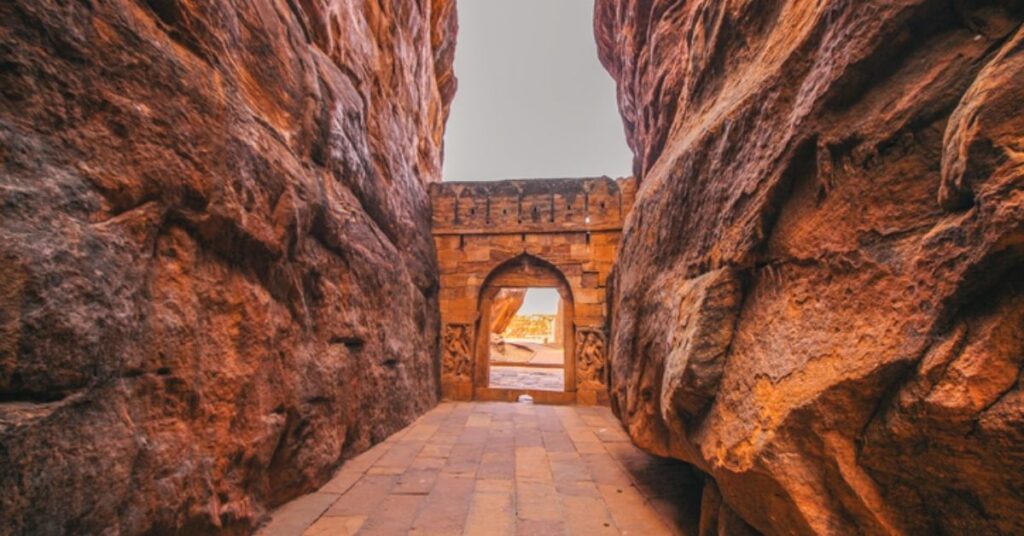
Story– These caves consist of four temples of which three are dedicated to Hinduism and one to Jainism. The first temple is of Lord Nataraja, the second and third are of Lord Vishnu and the fourth temple is of Lord Mahavir.
Description- Badami is declared as a heritage site due to its mesmerising and ancient architecture, mystical carvings and sculptures. The must-see attractions also include Agastya Lake and the Bhoothnath temple. The beautiful Badami Archaeological Museum is worth seeing.
4. Udayagiri caves, Khandagiri caves Odisha
History– Excavated during the reign of King Kharavela during the Mahamegavahana dynasty who ruled the kingdom of Kalinga from 2nd century BCE to 5th century BC, Udaygiri and Khandagiri were made by Jains.
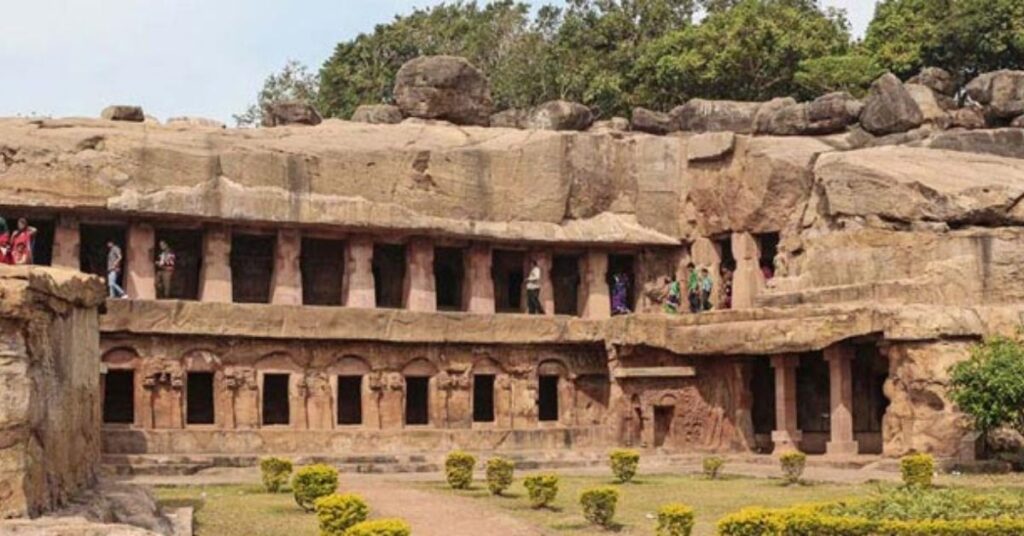
Story– Udaygiri caves means ‘Sunrise Hill’ and consist of 18 caves, while the Khandagiri caves have 15 caves and are also known as Cuttack caves. Located at Bhuvneshwar, there are 20 rock-cut caves. These caves were used by Jain monks to reside and study. Udaygiri has Rani gumpha, Bath gumpha, Hathi gumpha and Ganesh gumpha. Whiles Khandagiri has the Ananta gumpha.
Description– These caves are a must-visit as they are the ancient Jain rock-cut caves in the Indian subcontinent. The inscriptions in all the gumphas depict and describe the existence of the Jain culture and tradition. Jainism was the religion followed during King Kharavel’s time. Jainism is truly depicted from the architecture and the inscriptions carved at this very place in Odisha.
5. Mawsmai caves, Meghalaya
History- Situated in Cherrapunji, Meghalaya, The Mawsmai caves are nature’s wonder to view and visit. It contains natural formation that the tourists can enjoy, in the form of limestone.
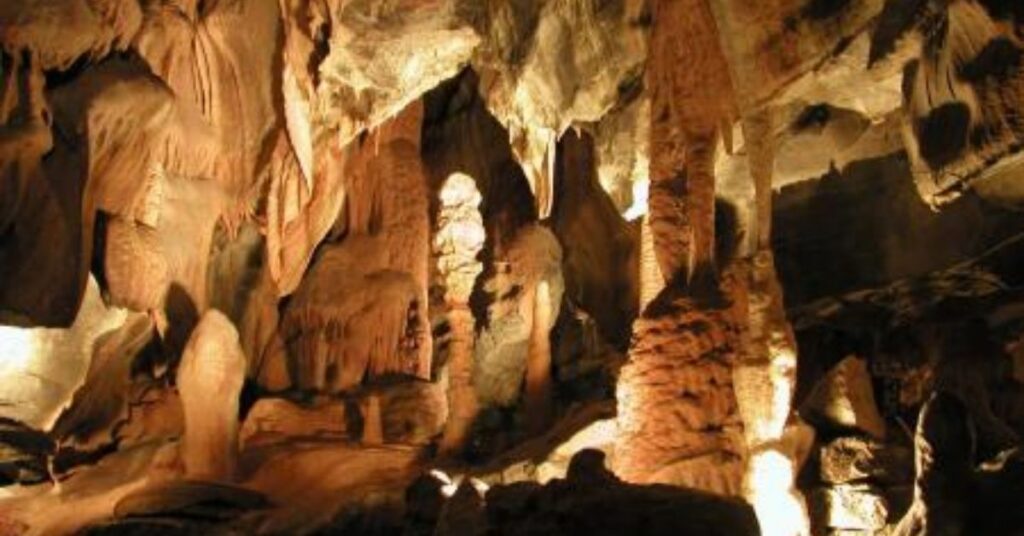
Story- The caves are the most popular tourist attractions and are quite long, about 150 meters is open for tourists while the rest of the section remains closed. The natural formation is the handiwork of years of natural erosion and the underground waters. The cave is broad at the entrance but gradually narrows ahead.
Description- The cave has many natural formations and is quite spacious, some halls are as big as an amphitheatre. The visitors can view the water dripping from the stalactites and the stalagmites. It’s best to visit after the monsoon as water floods in during monsoon.
6. Borra caves, Vishakhapatnam
History – Borra caves are located at Vishakhapatnam, Andra Pradesh. This is the largest cave in the country. In the discovery of William King George during a geological survey of India, these caves were about 1 million years old.
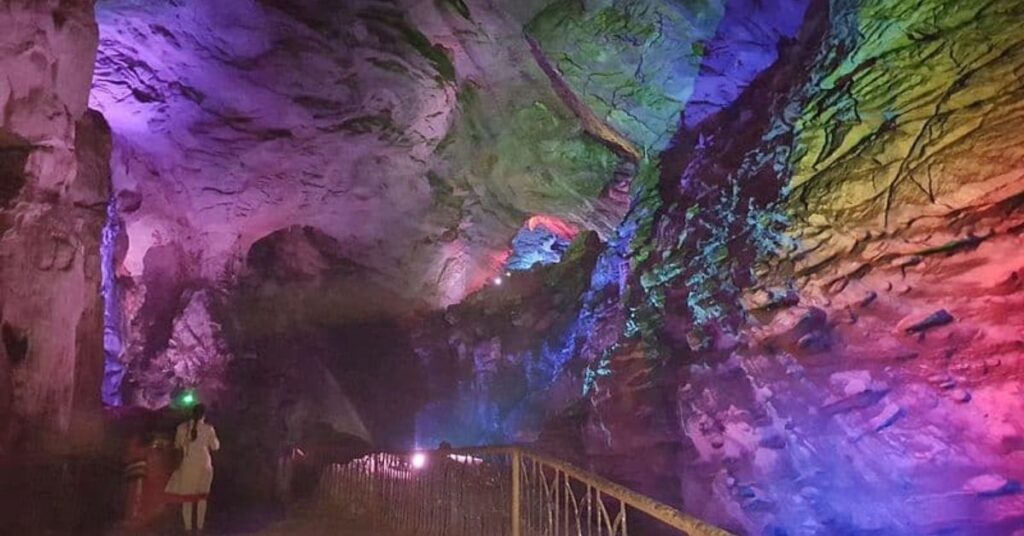
Story- There were several legends in the discovery of these caves amongst the tribals. As per the stories by one of the legends, the discovery of Borra caves was when a cowherd searching for his lost cow came across this cave and found a Shiva Linga. Thus believing that Lord Shiva has saved his cow.
Another belief is that Lord Shiva took the form of a cow and was found here and this cow was the source of the Gosthani river. Therefore, the flow of the river on the limestone deposits lead to the formation of Borra Caves.
Description- These caves are famous for their stalactite and stalagmite formations. Along with these, naturally formed Shiva- Parvati carvings, Rishi’s beard, and other various cow’s udder, human brain, crocodile formation are the main attractions. These caves are a must-visit for their beautiful formations. The lighting gives it an amazing view and hence no one can miss it.
7. Tabo caves, Himachal Pradesh
History- Many centuries ago, the cliffs above the Tabo monastery have been a hollow by several caves hence the name – Tabo caves. They still serve the monks as dwellings during the harsh winter.
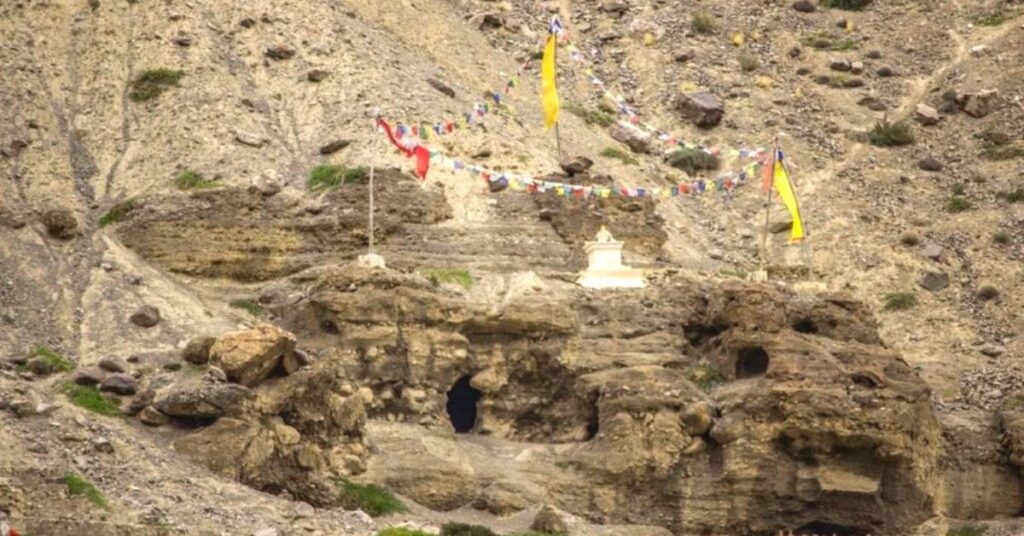
Story- They are a series of artificial caves of excavation, made up of brittle rock and are constantly decaying. Initially, these were for the monks to utilize as an assembly. Storage of grains and later denoted to building houses.
Description- There is controversial information about the paintings in the caves, some say the paintings exist while some are of opinion that there are no signs of any paintings. Some caves have structures in front as well.
Isn’t it interesting the way Indian caves reflect our past? Their stories and the ancient architecture, take us to prehistoric times. There is a range of historical experiences one can look forward to and can explore the caves of India that take us back in time- a journey to our glorious past.
Also follow India Chalk on Instagram for more amazing travel content. You can share your travel story with us. Reach out to us on email at contact[at]ndiachalk[dot]com. This blog is curated by India Chalk and written by Manasi Spare.

